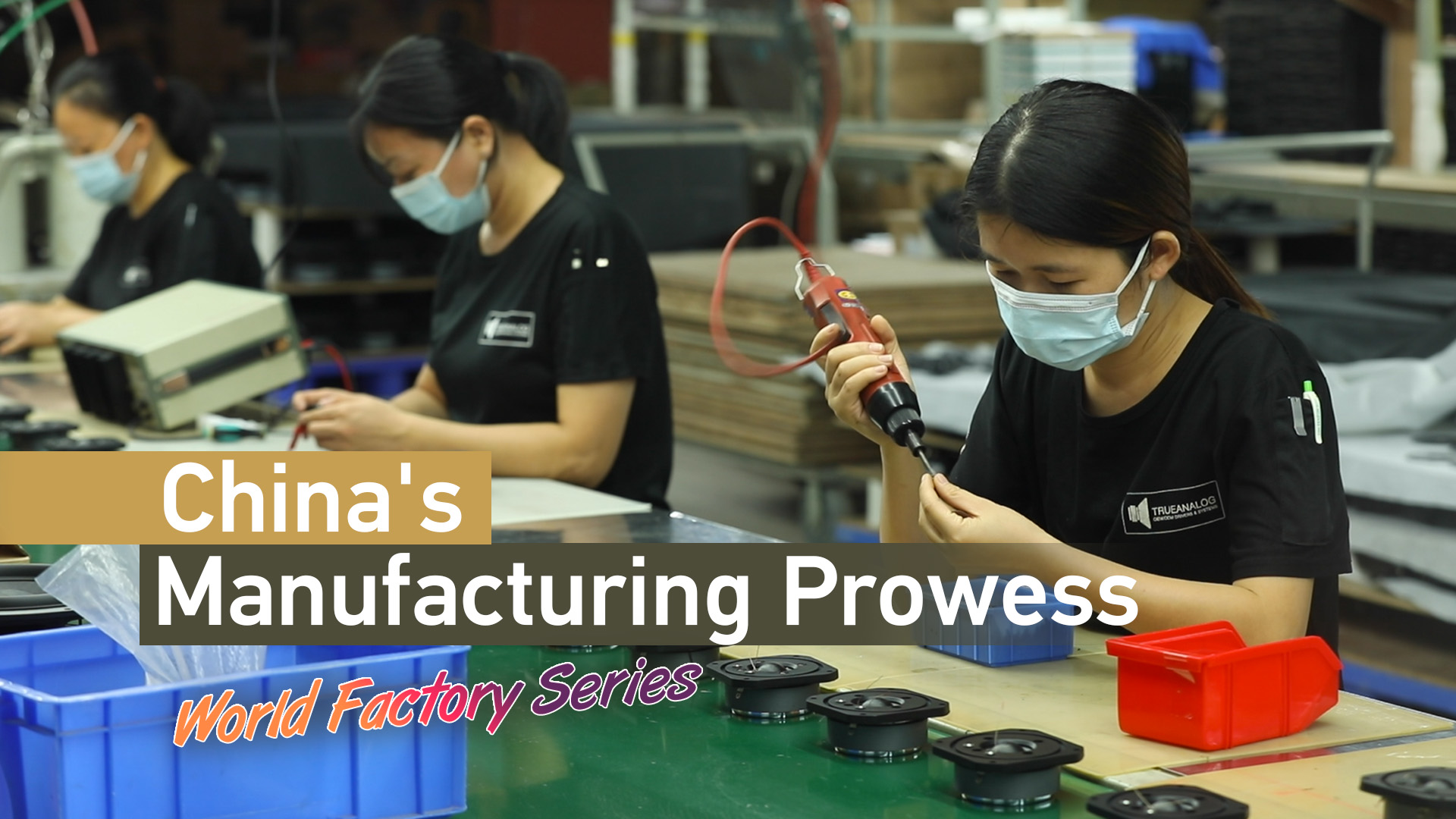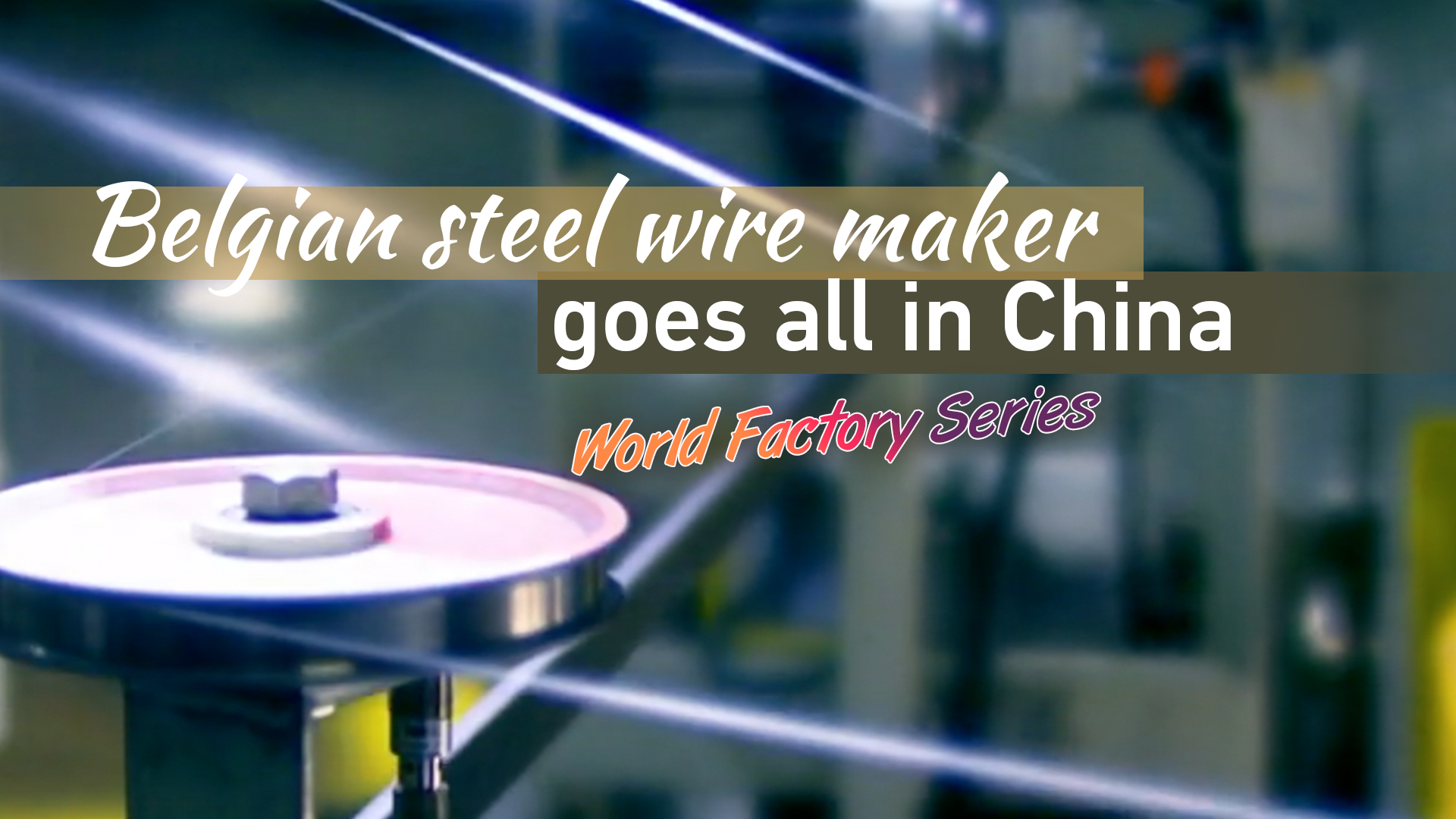
Editor's note: This is the third article in a year-end series of reporter's diaries, which documents our footprints across China in this extraordinary year immobilized by fear, grief, and also love. You can find the first and second here.
China will overtake the U.S. to become the world's largest economy by 2028, five years earlier than previously projected, according to the annual economic league table released by the London-based Center for Economics and Business Research (CEBR). The report largely attributes this projection to the country's effective control of the coronavirus pandemic compared with those of the U.S. and Europe.
Maintaining economic stability while containing the spread of the virus on top of the years-long trade tensions with the U.S. is a tall order. We witnessed the struggle of the Chinese economy in times of crisis – how companies resumed operating to guarantee minimum survival, how brick and mortar stores moved online, and how this world factory has moved up the manufacturing value chain.
02:55

Go tech savvy
As life struggled to return to normal as COVID-19 cases dwindled in the late summer months, we set out from Beijing in one of our first business trips to examine how the economy was faring amid the pandemic and trade tensions.
At the Suzhou Industrial Park, we met a few entrepreneurs devoted to exploring the range of technological possibilities. "I wanted to do something for the people's well-being with my expertise," Zhao Shuyan told us during our trip in August. Before we arrived, we planned to only report on Chinese R&D into cutting-edge crop-dusting drones. But the reality exceeded our imagination.
A former autopilot director at German auto supplier Bosch, Zhao turned to agriculture because pesticide poisoning has long plagued farmers. UN figures show that roughly 200,000 people die from pesticide poisoning across the world every year, and in other cases, results in severe health problems such as cancer, sterility, birth defects, and neurological disorders. "Farmers are living at the mercy of nature," she said.
Zhao is responsible for developing the "eyes" of the agricultural drones at startup EAVision. Tramping through hills and plateaus, she's helping make farm work safer and easier with an iterative approach to mitigating farmers' exposure to toxins, improving productivity, thus freeing them from intensive labor to focus on activities that provide greater value.
02:44

We then traveled to a compound where Song Yang's company iMotion Automotive Technology – one of China's few providers of self-driving solutions – is nestled. "I started this company because China lagged in self-driving development," Song told us in his plain-decorated office. China's late arrival in using AI to put cars on the road inspired him to seek breakthroughs in autonomous driving. Within a few short years, the country achieved self-sufficiency in producing mass-market cars with L1, L2, and L3 automated driving systems.
However, a looming tech decoupling made Song anxious. "What hampers these efforts is the U.S.' tech containment in silicon chips on the grounds of national security," he frowned. But for now, a complete decoupling is nearly impossible because China continues to hold an important place in the manufacturing of such tech materials.
Moving upstream
Low-end manufacturing, which once made China the factory of the world, is on the decline. When we met Yao Yuanhao, owner of Guangzhou Junhao Audio Production, a factory that produces speaker cabinets for loudspeakers, his anxiety was palpable. Caught between rising labor costs and soaring land prices, the profit margin of his factory was getting thinner.
At its peak, the factory hired thousands of workers, but now it was down to around 500. And to find young workers who were willing to endure loud noises and the smell of heavy paint was increasingly difficult. In his interview, he couldn't hide the heavy sighs at the end of almost each sentence.
He knew that consumer tastes were changing fast – wireless and Bluetooth-enabled loudspeakers were on the rise – but he lacked the know-how and the courage to overhaul his assembly lines.
His story highlighted one thing: To retain one's competitive edge, it is essential to find one's niche in the market. For low-end manufacturing, which does not involve many skills, the jobs are easily transferable, which has been evidenced by the growing trend of low-tech, repetitive jobs shifting to Southeast Asia due to rising labor costs in China, a trend registered in recent years.
03:50

In the meantime, in eastern China's Yiwu, the world's biggest small commodities market, entrepreneurs are trying hard to break out of their comfort zones since travel restrictions have left their businesses in limbo. We spent several days there visiting trade malls and trying to find some clues in this barometer of the Chinese economy.
While wandering about in the street, we were drawn to a lavish Christmas gifts store. Its boss Yin Ruoxi told us they've been trying to move more of their market online amid the pandemic while moving up the value chain by designing the products in addition to manufacturing them.
His business philosophy is reflective of China's aspiration toward capturing more added-value. Nowadays, customers prefer original decorations and, in particular, those that are tailor-made rather than mass-produced standardized products.
03:07

Foreign firms reluctant to leave
Deteriorating geopolitical ties along with the unfolding pandemic make doing business in a foreign country difficult. Nonetheless, most foreign companies are reluctant to leave China. They include both Philip Richardson's factory – a self-employed American speaker producer in Guangzhou – and Belgian steel wire giant Bekaert, which established its Asian headquarters in Shanghai in the 1990s.
They cited China's manufacturing strength as well as its mature, complete supply chain as major reasons for them to stay and expand their business.
For example, almost all parts that went into the production of the speakers at Richardson's company Trueanalog Strictly OEM can be sourced from the Yangtze River Delta Region and the Pearl River Delta Region. Moving their manufacturing base to neighboring countries would incur higher expenses for buying the parts and managing supply chains.
"In China, we have access to an excellent supply chain. We have access basically to the whole range of products and components that go into our equipment," Kurt Van Rysselberges, general manager of engineering at Bekaert, told us in the showroom of the R&D building in Jiangsu – the firm's only research center abroad. This is his 13th year since he moved to China. His team designs and manufactures equipment that makes steel wire products and sends them to the U.S., Europe, and other places.
According to the American Chamber of Commerce (AmCham) Shanghai's annual member survey released in September 2020, more than 70 percent of over 200 U.S. companies with operations in China don't plan on leaving the country, while only 3.7 percent said they are shifting part of their production back to the U.S. and 14 percent are moving to non-U.S. locations.
(Cover image designer: Fan Chenxiao)

